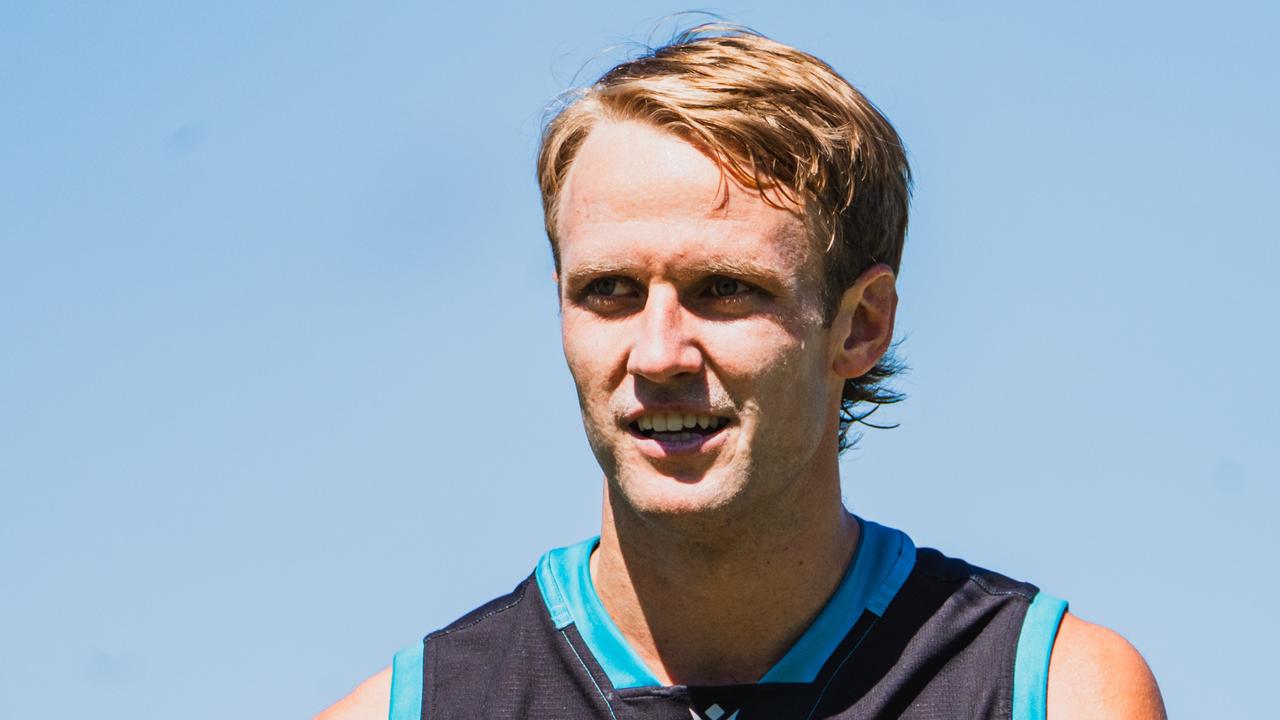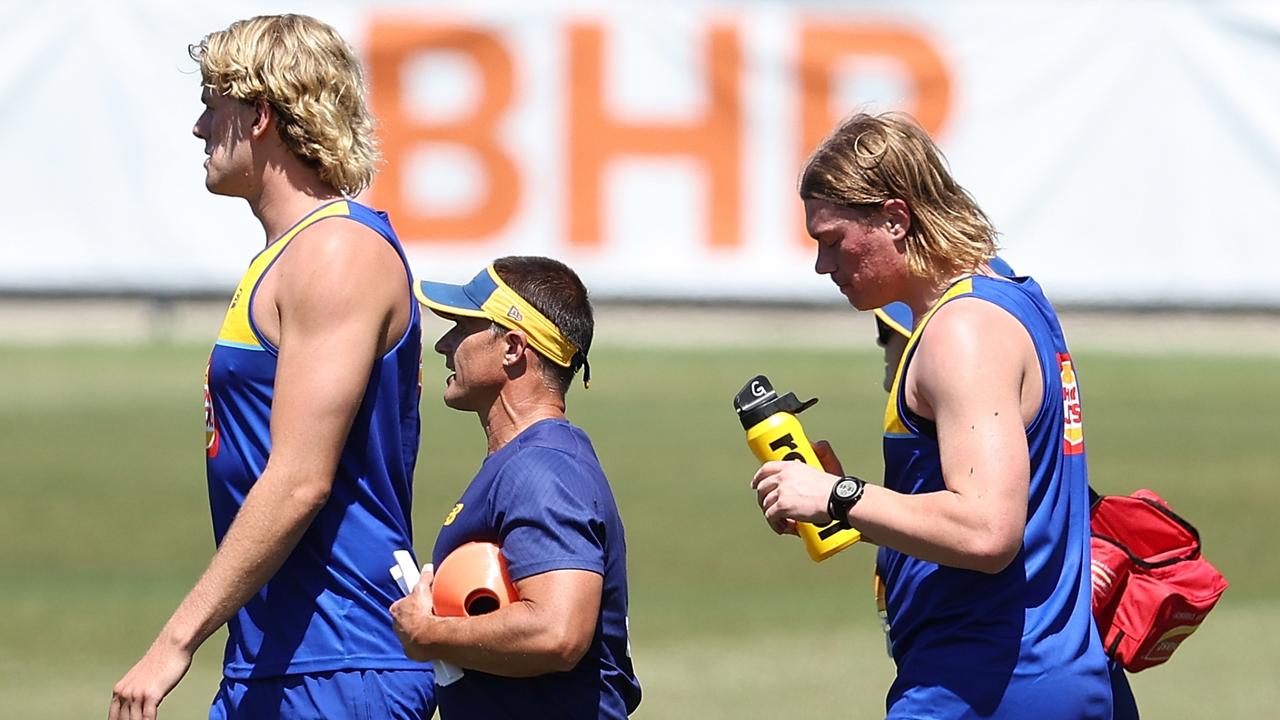AFL Draft rewind: How 2021 class stacks up to pre-draft comparison
Every year, top AFL Draft prospects are compared to current stars. But how accurate are the comparisons? Ahead of the their all-important third season, we revisit the class of 2021.
AFL
Don't miss out on the headlines from AFL. Followed categories will be added to My News.
Comparisons can be wild during the draft process, piling on unfair pressure on prospects ahead of finding a new footy home.
However, the benefit of comparisons gives fans and viewers of the draft an opportunity to understand the type of player their club is recruiting, and what they can expect from their favourite teams’ new players.
We take a look at the first round picks in the 2021 draft, the comparisons they drew at the time and how the start of their careers are stacking up so far.
#1 – Jason Horne-Francis (North Melbourne)
Comparison: Patrick Dangerfield
Horne-Francis after two seasons: 41 games, 17.2 disposals, 8.7 contested possessions, 4.2 clearances, 2.9 tackles, 3.2 inside 50s, 0.5 goals
Dangerfield after two seasons: 23 games, 12.4 disposals, 6.4 contested possessions, 2.1 clearances, 2.1 tackles, 1.5 inside 50s, 0.95 goals
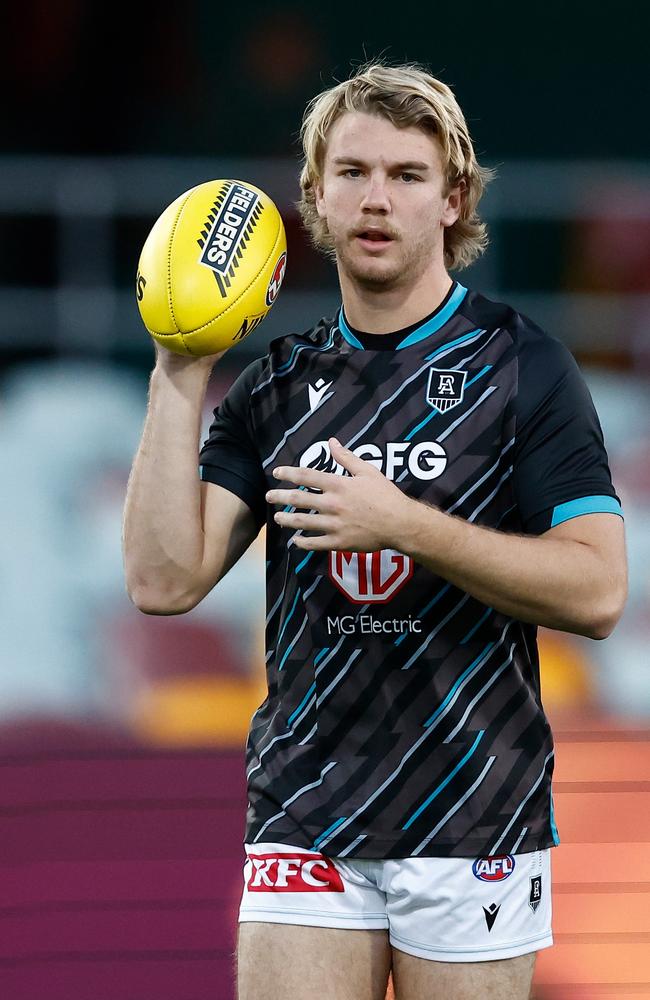
Horne-Francis has not done much wrong on the field through his first two seasons at North Melbourne and then Port Adelaide. His off-field demeanour and attitude has received plenty of coverage after forcing his way out of the Roos, however his potential as a 20-year-old AFL star is clear. He could be one of the league’s all-time greats if he continues his trajectory.
#2 – Sam Darcy (Western Bulldogs)
Comparison: Max King
Darcy after two seasons: 7 games, 8 disposals, 4.3 contested possessions, 3.7 marks, 1.6 tackles, 2 hit outs, 0.4 goals
King after two seasons: 18 games, 7.6 disposals, 4.9 contested possessions, 3.2 marks, 1.2 tackles, 0.9 hit outs, 1.2 goals
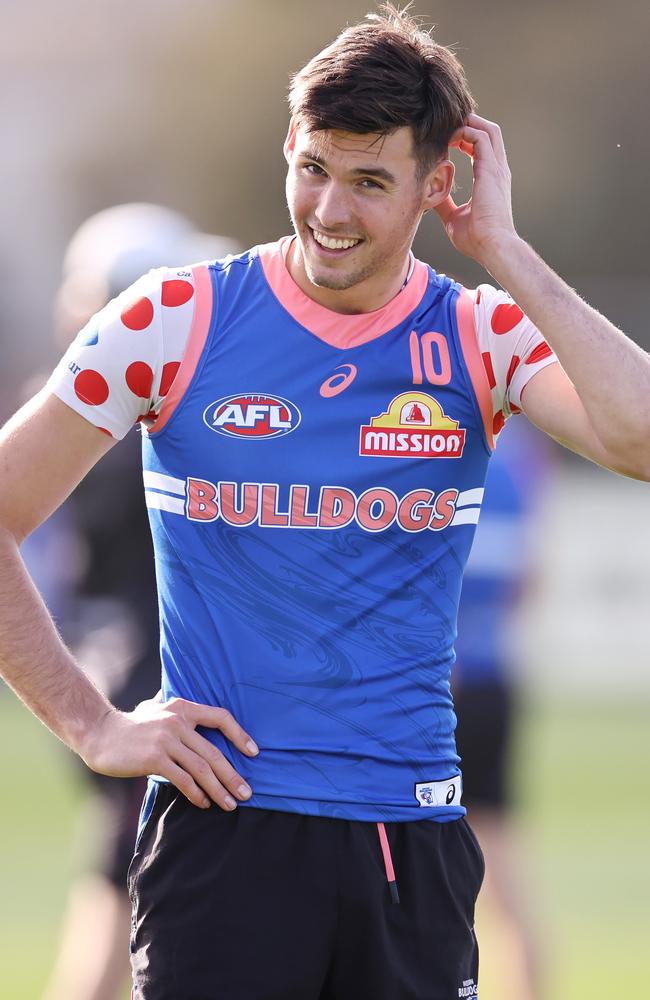
Darcy has struggled to cement a spot in the Bulldogs’ best team, and at times has floated both forward and back. King missed his entire debut campaign with a torn ACL but has since turned into one of the league’s best young key forwards. The numbers across the two talented talls’ career starts are not dissimilar.
#3 – Finn Callaghan (GWS Giants)
Comparison: Josh Kelly
Callaghan after two seasons: 26 games, 19.7 disposals, 4.4 marks, 3 inside 50s, 1.2 clearances, 1 tackle, 0.2 goals
Kelly after two seasons: 36 games, 17.6 disposals, 3.8 marks, 2.2 inside 50s, 1.5 clearances, 3.4 tackles, 0.6 goals
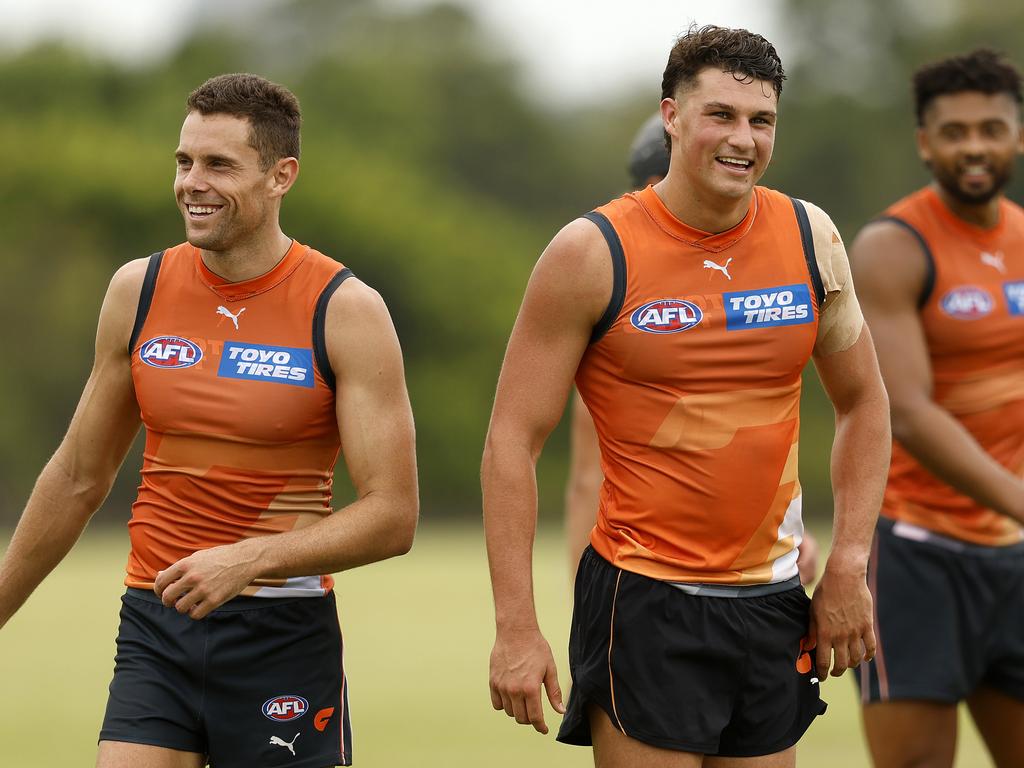
Callaghan has had the opportunity to learn underneath his draft day comparison in Kelly, and the 2021 draftee is turning out a lot like his mentor. Callaghan has the edge in most statistical categories, however Kelly’s impact around goal and the defensive pressure he applied early on has helped him become one of the game’s great two-way players.
#4 – Nick Daicos (Collingwood)
Comparison: Zach Merrett
Daicos after two seasons: 47 games, 28.2 disposals, 7.6 contested possessions, 3.7 marks, 2.9 tackles, 3.2 inside 50s, 2.7 clearances, 0.6 goals
Merrett after two seasons: 37 games, 18.5 disposals, 10.6 contested possessions, 3.4 marks, 4.8 tackles, 3.1 inside 50s, 1.5 clearances, 0.4 goals

The start to Daicos’ career is unprecedented. Even comparing him to one of the game’s current great midfielders seems silly in hindsight. The one knock on Daicos as a player has been his ‘lack’ of contested grunt, with just more than a quarter of his disposals (26.9 per cent) contested. It is barely a knock, though; Daicos is the best player in the league at 20 years old, and he’ll only just keep getting better each year for the next decade.
#5 – Mac Andrew (Gold Coast)
Comparison: Paddy Ryder
Andrew after two seasons: 21 games, 10.9 disposals, 5 marks, 1.5 tackles, 1.1 inside 50s, 0 hit outs, 0 goals
Ryder after two seasons: 30 games, 8.9 disposals, 3.8 marks, 2 tackles, 0.6 inside 50s, 3.2 hit outs, 0.2 goals
Andrew was drafted as a pinch-hitting ruck-forward option, but has started his career down back and, in 2023, became an important figure in Gold Coast’s defensive half. He’ll continue to grow into his long frame, with the height and athleticism that offers plenty of upside.
#6 – Joshua Rachele (Adelaide)
Comparison: Toby Greene
Rachele after two seasons: 34 games, 13.7 disposals, 3.4 marks, 2.8 tackles, 2.2 inside 50s, 1.2 goals, 0.5 goal assists
Greene after two seasons: 38 games, 25.6 disposals, 3.7 marks, 2.8 tackles, 2.8 inside 50s, 0.3 goals, 0.3 goal assists
It’s a hard comparison considering Greene joined the Giants for their inaugural season, and started his career as a midfielder. But Rachele has brought serious X-Factor to Adelaide’s forward line, creating a mosquito fleet alongside Izak Rankine that many sides would fear. Rachele has the potential to push up into the midfield in the future, but his damage inside the arc is already great.
#7 – Josh Ward (Hawthorn)
Comparison: Sam Walsh
Ward after two seasons: 30 games, 20 disposals, 4.3 marks, 2.4 tackles, 2.3 clearances, 2.1 inside 50s, 0.1 goals
Walsh after two seasons: 39 games, 23.1 disposals, 4.8 marks, 3 tackles, 3.1 clearances, 3.4 inside 50s, 0.4 goals
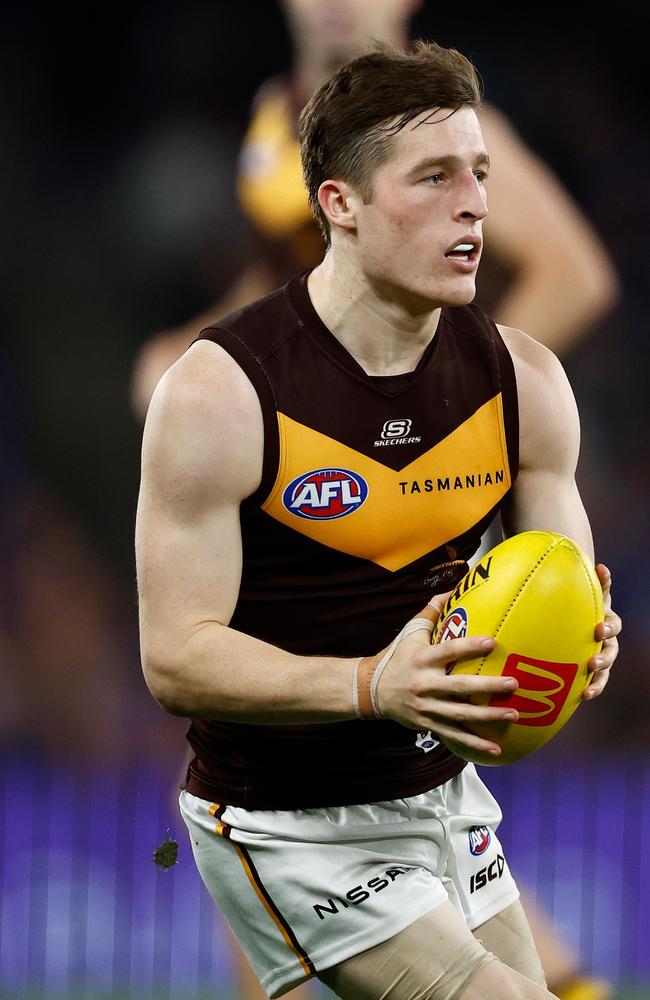
Being compared to one of the best number-one picks in recent history is harsh, but Ward has done well to live up to the hype – at least statistically – in his first two seasons. He’s flown under the radar slightly, with Jai Newcombe and Will Day earning the plaudits in Hawthorn’s engine room, but he’s primed for a bigger role in year three. Ward will have been a steal at pick 7 if he ends up replicating Walsh in his career.
#8 – Jye Amiss (Fremantle)
Comparison: Jack Riewoldt
Amiss after two seasons: 25 games, 7.8 disposals, 3.7 marks, 1.0 inside 50s, 1.8 goals
Riewoldt after two seasons: 24 games, 10.3 disposals, 4.7 marks, 2 inside 50s, 1 goal

Amiss barely took the field in his debut season, playing just three games, but his second season he burst onto the scene with 41 goals for the Dockers. Riewoldt did not reach that mark until his fourth season when he kicked 78 majors and won his first Coleman Medal; will Amiss reach those lofty heights of the Tigers legend?
#9 – Josh Gibcus (Richmond)
Comparison: Jake Lever
Gibcus after two seasons: 18 games, 9.2 disposals, 3.4 marks, 2.4 rebound 50s, 1.2 tackles
Lever after two seasons: 36 games, 15 disposals, 5.1 marks, 2.9 rebound 50s, 1.1 tackles
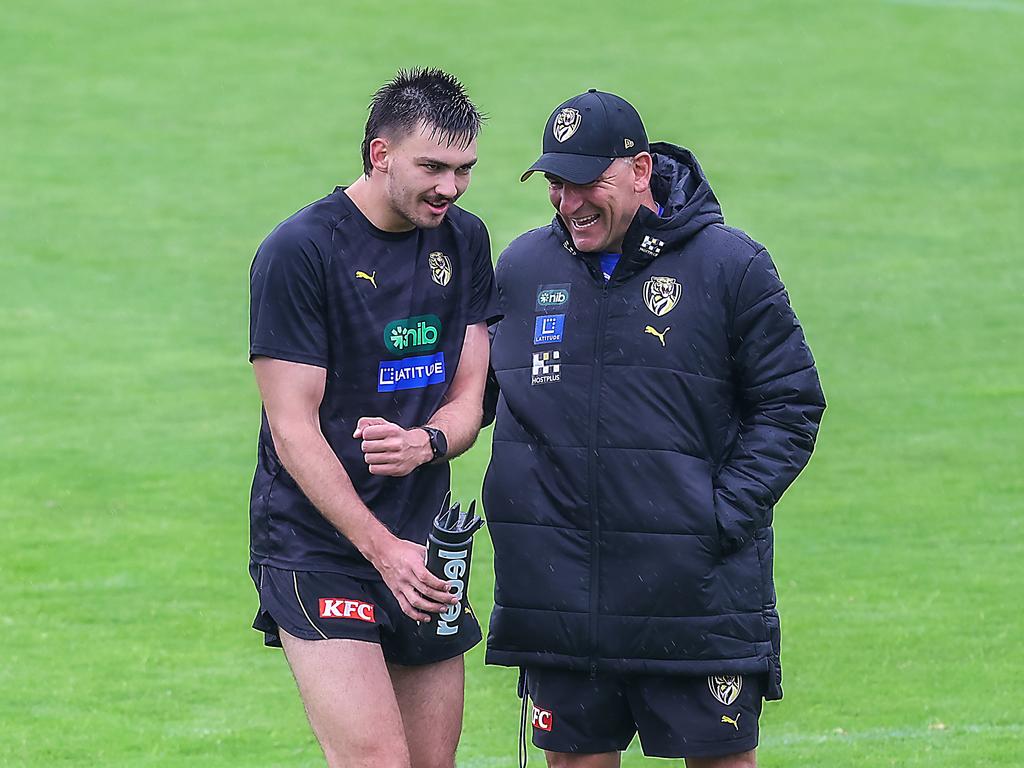
Gibcus was a bright young key defensive talent in his first season, and there was not as much of a jump between his and Lever’s first-year stats. But a persistent and significant hamstring injury kept him sidelined all of 2023. Gibcus is fully fit, training well and set to return to AFL football in 2024, slotting into the Tigers’ back line.
#10 – Neil Erasmus (Fremantle)
Comparison: Zac Bailey
Erasmus after two seasons: 19 games, 12.1 disposals, 2.9 marks, 2.8 tackles, 1.8 clearances, 1.7 inside 50s
Bailey after two seasons: 27 games, 12.6 disposals, 2.7 marks, 2.1 tackles, 0.9 clearances, 2.2 inside 50s
Erasmus’ statline does not tell the whole story, with 10 of his 19 games sub-affected so far in his career. It does bode well for the young Docker though, considering his stats in his first two seasons almost mirror those of Bailey, who is one of Brisbane’s best young players. Plenty to like from Erasmus as he continues to fight for a permanent spot in Fremantle’s best 22.
#11 – Nasiah Wanganeen-Milera (St Kilda)
Comparison: Lachie Whitfield
Wanganeen-Milera after two seasons: 41 games, 19.4 disposals, 5.7 marks, 3.2 rebound 50s, 2 tackles, 2 inside 50s
Whitfield after two seasons: 30 games, 18.6 disposals, 5.6 marks, 1.6 rebound 50s, 2 tackles, 1.63 inside 50s
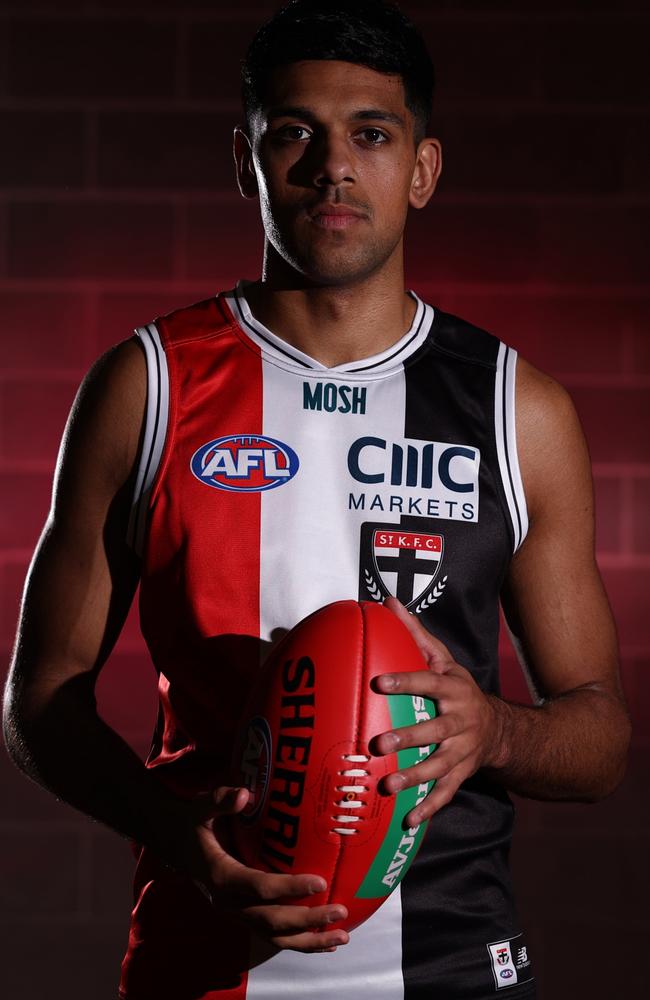
Wanganeen-Milera has had an oddly-similar entry to the AFL as Whitfield: drafted as a winger, and because of his elite use by foot has become a damaging half back. The numbers paint that picture as well, having similar numbers in almost every category. The Saints have landed themselves a beauty with Wanganeen-Milera.
#12 – Josh Sinn (Port Adelaide)
Comparison: Jack Crisp
Sinn after two seasons: 4 games, 6.8 disposals, 2 marks, 1 inside 50, 0.8 rebound 50s
Crisp after two seasons: 12 games, 10.8 disposals, 2.2 marks, 1.5 inside 50s, 0.7 rebound 50s
While Sinn has not been able to break into Port Adelaide’s stacked side so far in his two years at the club, his statistics are not that different from Crisp, who has been a mainstay at Collingwood since making the move ahead of the 2015 season. Sinn had all three games in 2023 sub-affected, and if he can get his body right – something Crisp has been able to do on his way to 213 consecutive games – break into the senior side he is still a great young prospect.
#13 – Ben Hobbs (Essendon)
Comparison: Taylor Adams
Hobbs after two seasons: 35 games, 17.1 disposals, 3.8 marks, 3.3 tackles, 2.9 inside 50s, 2.2 clearances, 0.4 goals
Adams after two seasons: 31 games, 20.6 disposals, 3.9 marks, 3.4 tackles, 2.9 inside 50s, 4 clearances, 0.4 goals
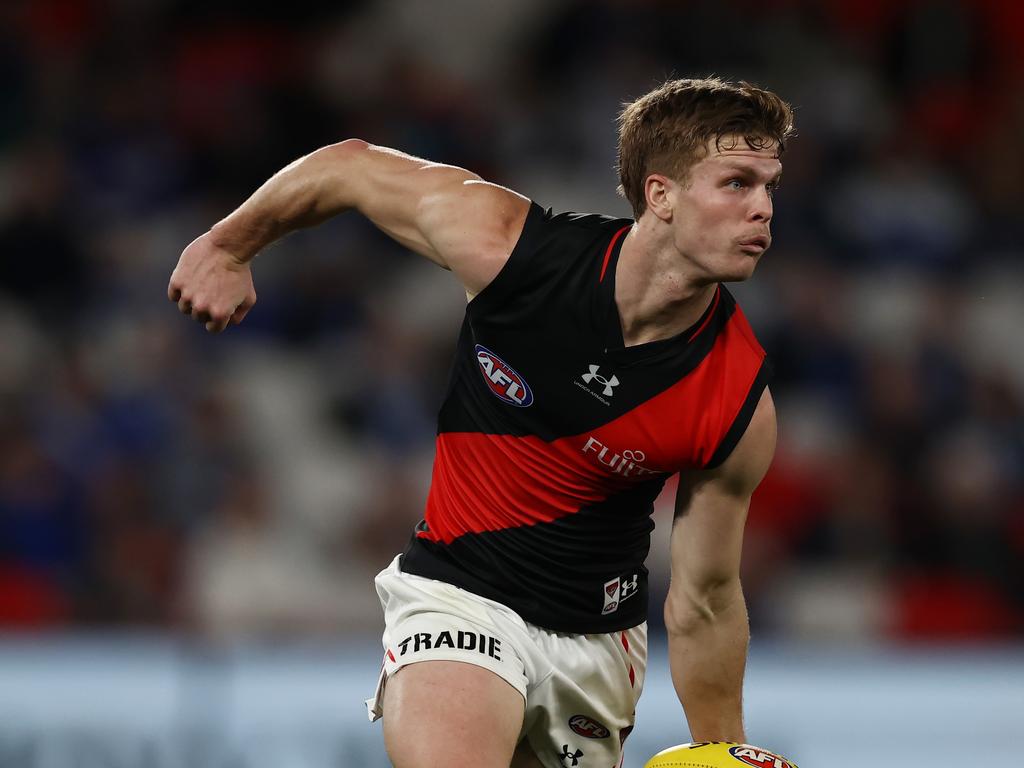
Almost identical stats between Hobbs and Taylor, with the now-Sydney midfielder edging out the Bombers youngster. Hobbs is still highly rated within the Essendon circles, and will likely see his role expand heading into his third season at the club.
#14 – Campbell Chesser (West Coast)
Comparison: Nick Hind
Chesser after two seasons: 14 games, 11.6 disposals, 2.4 marks, 1.9 tackles, 1.4 inside 50s, 0.9 rebound 50s
Hind after two seasons: 21 games, 10.4 disposals, 1.9 marks, 2.3 tackles, 2.3 inside 50s, 0.3 rebound 50s
Hind initially started as a forward during his two years at the Saints, however the pair’s stat lines are still pretty similar. Chesser had a wretched run with injury to start his career at the Eagles, missing his entire debut campaign, but is highly regarded in Perth.
#15 – Leek Aleer (GWS Giants)
Comparison: Jordan Ridley
Aleer after two seasons: 4 games, 9.5 disposals, 4.8 marks, 2.2 tackles, 1.2 rebound 50s
Ridley after two seasons: 3 games, 13.7 disposals, 4.7 marks, 1.3 tackles, 2.3 rebound 50s
Neither Aleer or Ridley managed to play much over their first two seasons in the AFL, with Ridley missing his entire debut campaign. Aleer was drafted to the Giants as an incredibly raw, yet talented, intercepting defender, and will be expected to continue to make strides in his development over the next few seasons. It took Ridley until his fourth season to play more than six games in a year.
#16 – Darcy Wilmot (Brisbane)
Comparison: Lachie Ash
Wilmot after two seasons: 29 games, 15.3 disposals, 3.9 marks, 2.8 rebound 50s, 1.8 tackles, 1.8 inside 50s
Ash after two seasons: 35 games, 15.1 disposals, 4.1 marks, 2.3 rebound 50s, 2.4 tackles, 1.8 inside 50s
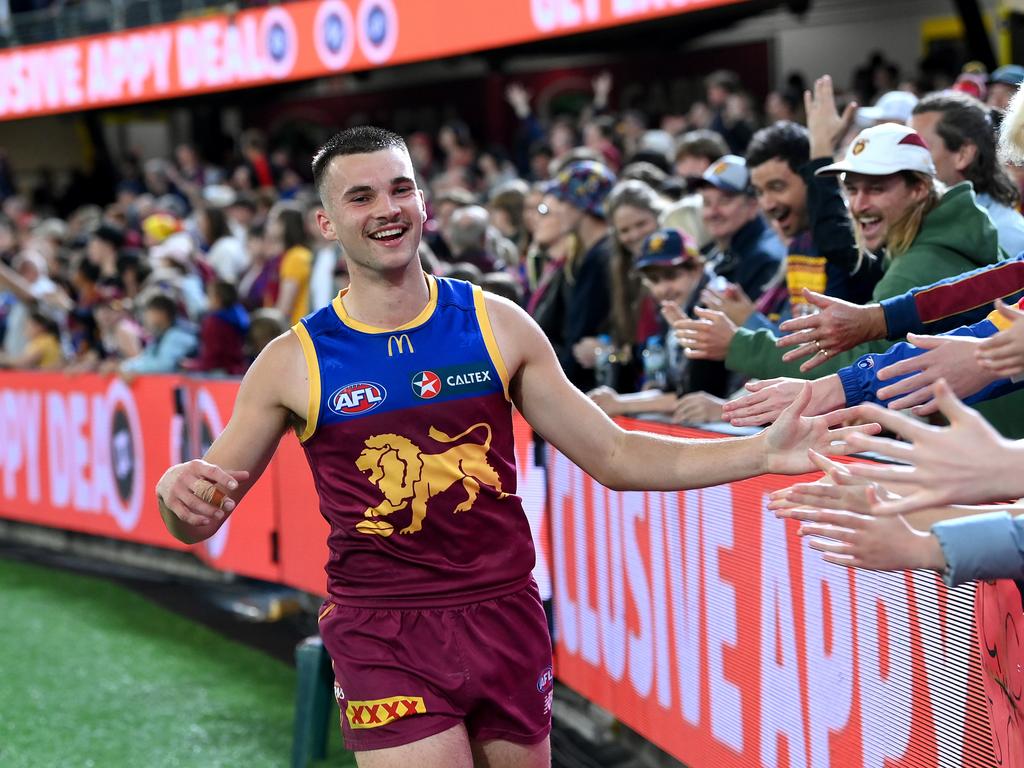
Wilmot was the youngest player in his draft class, and it took him all of the home-and-away season in his debut campaign to prove he was up to the level. He debuted in the elimination final win over Richmond and has stayed in Brisbane’s best side since then. Ash has come on as a classy player on the wing and half back for the Giants, and is a highly-respected young talent around the competition.
#17 – Tom Brown (Richmond)
Comparison: Caleb Daniel
Brown after two seasons: 1 game, 16 disposals, 6 marks, 2 inside 50s, 4 rebound 50s
Daniel after two seasons: 34 games, 19.1 disposals, 3.3 marks, 2.5 inside 50s, 0.8 rebound 50s
Brown has only broken through for one game at the Tigers, making his debut in 2023. His career after two seasons pales in comparison to Daniel, however the small defender has trained well in the pre-season and could be a new piece in Adam Yze’s Tigers lineup.
#18 – Angus Sheldrick (Sydney)
Comparison: Dion Prestia
Sheldrick after two seasons: 9 games, 12.8 disposals, 2.2 marks, 2.8 tackles, 2.3 inside 50s, 0.3 goals
Prestia after two seasons: 31 games, 17.9 disposals, 2.8 marks, 3.8 tackles, 2.5 inside 50s, 0.1 goals
While at a glance Sheldrick’s stats aren’t as impressive as Prestia’s in their respective first two seasons, the now-Richmond midfielder was a part of a dismal Gold Coast outfit in his first two years. Sheldrick has impressed during this pre-season and is tipped to be a best-23 player this year, potentially in a midfield role next to Chad Warner, Luke Parker and Callum Mills (when healthy).
#19 – Jacob Van Rooyen (Melbourne)
Comparison: Robbie Tarrant
Van Rooyen after two seasons: 20 games, 8.7 disposals, 3.1 marks, 2.1 tackles, 1.4 goals
Tarrant after two seasons: 9 games, 10 disposals, 2.8 marks, 2.4 tackles, 0 goals
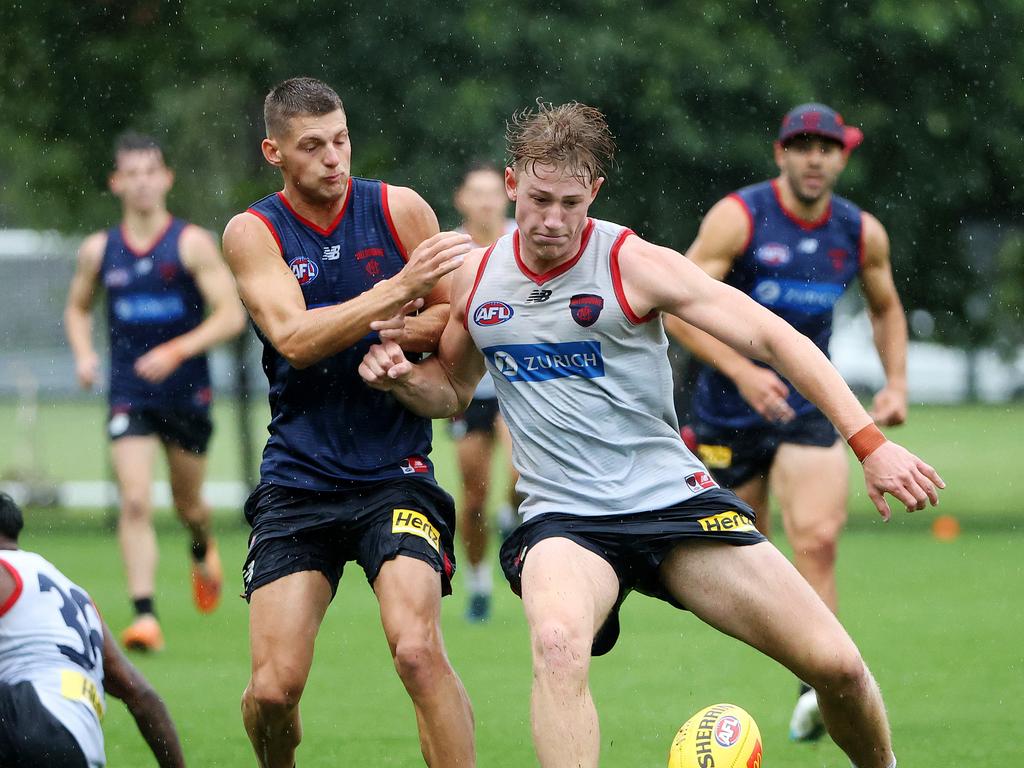
Van Rooyen did not debut in his first season, but became one of Melbourne’s most important forwards in a year the Demons struggled to find consistency inside the forward arc. Retrospectively, Van Rooyen’s draft comparison of Robbie Tarrant seems bizarre, but the young Demon was a terrific utility option in his draft year in Western Australia.
#20 – Kai Lohmann (Brisbane)
Comparison: Bailey Fritsch
Lohmann after two seasons: 8 games, 6.9 disposals, 1.5 marks, 2.4 tackles, 1.5 inside 50s, 0.1 goals
Fritsch after two seasons: 45 games, 16.4 disposals, 5.6 marks, 2.2 tackles, 3.3 inside 50s, 0.8 goals
Lohmann hasn’t hit the heights of Fritsch’s first two campaigns, however the Melbourne forward was drafted in the second round as a 21 year old and debuted at 22. Lohmann has struggled to break into a great Brisbane side, and more importantly a fantastic forward line, however he has been lauded for his efforts this pre-season and could be on the verge of a breakout campaign.
More Coverage
Originally published as AFL Draft rewind: How 2021 class stacks up to pre-draft comparison






